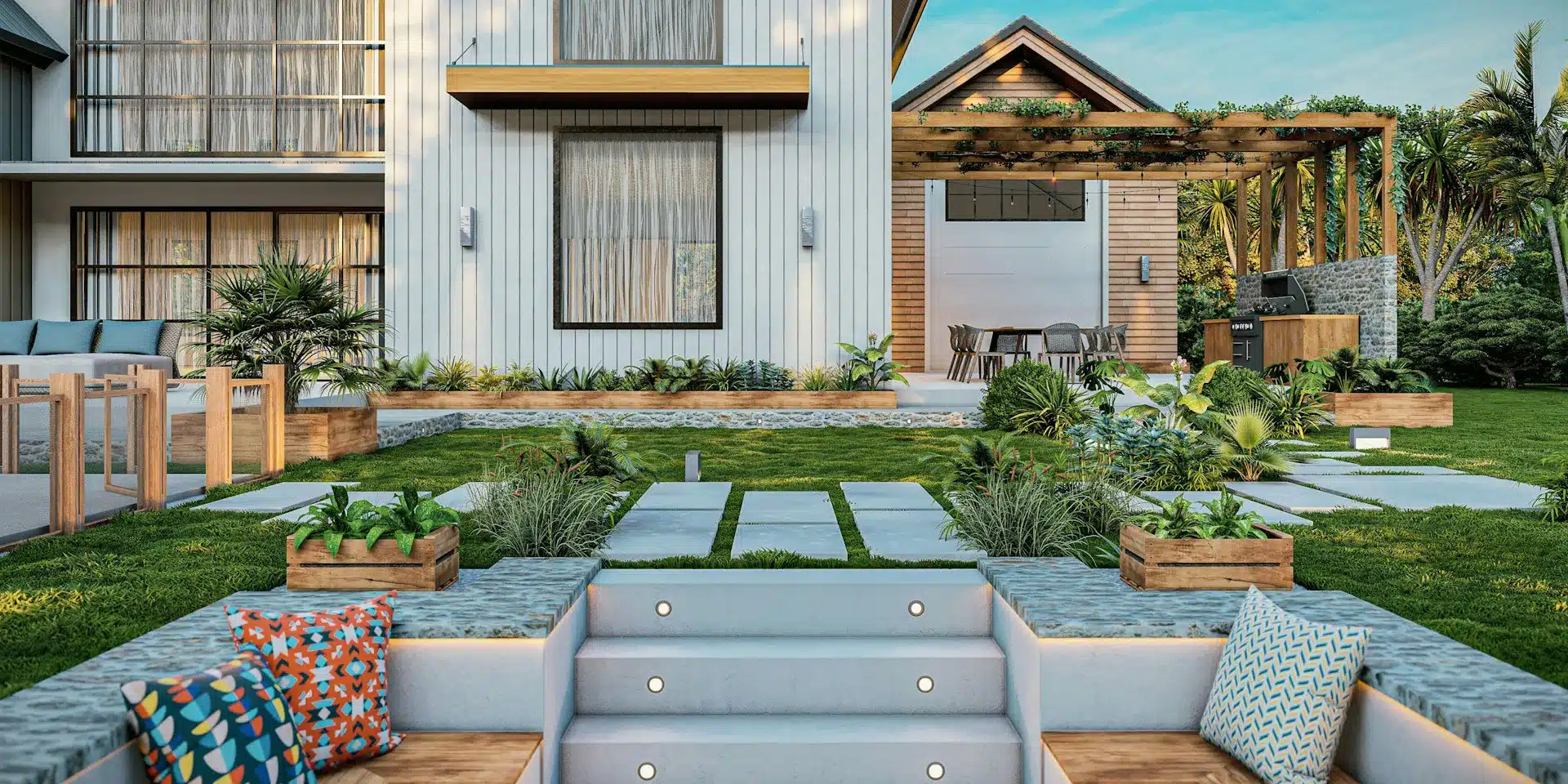Landscaping has evolved beyond basic lawns and flower beds to creating immersive, functional, and sustainable outdoor environments. For homeowners, a well-designed backyard offers a private oasis, while for resorts, it’s crucial for the guest experience. Innovations in landscaping are changing how we design, manage, and enjoy outdoor areas as our connection to nature grows.
Embracing Sustainable Landscaping
One of the most significant shifts in modern landscaping is the move toward sustainability. Homeowners and commercial properties are increasingly adopting eco-friendly practices that benefit the environment without sacrificing aesthetic appeal. This approach focuses on creating resilient landscapes that work in harmony with the local ecosystem.
The Rise of Native Plants
A core principle of sustainable landscaping is the use of native plants. These are species that have adapted over thousands of years to the local climate, soil, and wildlife. Incorporating them into your landscape offers several advantages:
- Reduced Maintenance: Native plants are naturally resilient to local pests and diseases, which means they require fewer pesticides and fertilizers.
- Water Conservation: Having adapted to the regional rainfall patterns, native plants need less supplemental watering once established, helping to conserve a precious resource.
- Wildlife Support: They provide essential food and shelter for local pollinators like bees and butterflies, as well as birds and other wildlife, promoting biodiversity in your backyard.
Smart Water Conservation
Water is a finite resource, and efficient irrigation is a cornerstone of sustainable landscaping. Traditional sprinkler systems can be wasteful, often leading to overwatering and runoff. Modern innovations offer smarter solutions:
- Drip Irrigation: This method delivers water directly to the base of plants, minimizing evaporation and ensuring that moisture gets right to the roots where it’s needed most.
- Rainwater Harvesting: Systems like rain barrels or underground cisterns capture rainwater from rooftops, providing a free and sustainable source of water for your garden.
- Hydrozoning: This practice involves grouping plants with similar water needs together. By creating different “zones,” you can tailor your watering schedule to meet the specific requirements of each area, preventing both under and overwatering.
Smart Technology Integration
Technology is revolutionizing how we manage our outdoor spaces, making landscape maintenance more efficient and less labor-intensive. These smart solutions offer convenience and precision, allowing for pristine landscapes with minimal effort.
Automated and Intelligent Systems
Automation is taking the guesswork out of garden care. Smart irrigation controllers, for example, can adjust watering schedules based on real-time weather data, soil moisture levels, and plant types. This ensures your landscape receives the perfect amount of water, saving you time and money while promoting healthier plant growth.
Similarly, automated landscape lighting can enhance the beauty and security of your property. You can program lights to turn on at dusk and off at dawn, or even control them remotely from your smartphone. Advanced systems allow for customizable scenes, changing colors and brightness to suit any mood or occasion.
The Dawn of Robotic Maintenance
Robotic lawnmowers are becoming increasingly popular for maintaining lush, healthy lawns. These autonomous devices quietly trim the grass on a regular schedule, returning to their charging station when finished. They operate within a defined boundary wire and can handle complex lawn shapes and slopes. By mowing more frequently, they produce tiny clippings that act as a natural fertilizer, improving lawn health over time.
Innovative Design Elements
Contemporary landscape design is focused on creating dynamic, multi-functional outdoor environments. Today’s trends blend natural beauty with modern living, transforming backyards and resort grounds into true extensions of indoor spaces.
Vertical Gardens and Green Walls
When ground space is limited, vertical gardens offer a creative solution for adding lush greenery. These “living walls” can be installed on fences, exterior walls, or freestanding structures. They are perfect for growing herbs, flowers, and even some vegetables. In addition to their striking visual impact, vertical gardens can help improve air quality and reduce urban heat island effects, making them a popular choice for city balconies and commercial properties.
Creating Outdoor Living Spaces
The line between indoors and outdoors is blurring as more people seek to create fully functional outdoor living areas. These spaces are designed for comfort and entertainment, often featuring:
- Outdoor Kitchens: Complete with grills, sinks, and countertops, these allow for seamless alfresco dining.
- Cozy Fire Pits: A fire pit or outdoor fireplace creates a natural gathering spot for friends and family, extending the usability of the space into cooler evenings.
- Comfortable Seating: Weather-resistant furniture, outdoor rugs, and decorative pillows turn patios and decks into inviting lounges.
Incorporating Natural Features
Natural elements like water and stone add a sense of tranquility and authenticity to a landscape. Water features, from small bubbling fountains to large, elegant ponds, create soothing sounds and attract wildlife. Rock formations, stone pathways, and retaining walls provide texture and structure, grounding the design in its natural surroundings. For those looking to create a truly luxurious escape, a custom pool can become the centerpiece of the backyard. Finding the right pool builder in Utah or your local area is the first step to creating that dream resort-style experience at home.
The Value of Professional Landscaping Services
While many of these innovations are exciting, implementing them effectively requires expertise. Professional landscaping services bring a wealth of knowledge in design, horticulture, and construction. Hiring a professional can help you navigate the complexities of creating a cohesive and sustainable outdoor space.
They can develop a master plan that aligns with your vision and budget, select the right plants and materials for your environment, and ensure proper installation. Furthermore, professional maintenance services can keep your landscape looking its best year-round, protecting your investment and allowing you more time to simply enjoy your beautiful surroundings.
Conclusion
Now that you have a better understanding of the benefits and considerations of creating an outdoor oasis, it’s time to start planning your own. Whether you choose to tackle the project on your own or hire a professional, remember to keep your personal style and preferences in mind.
